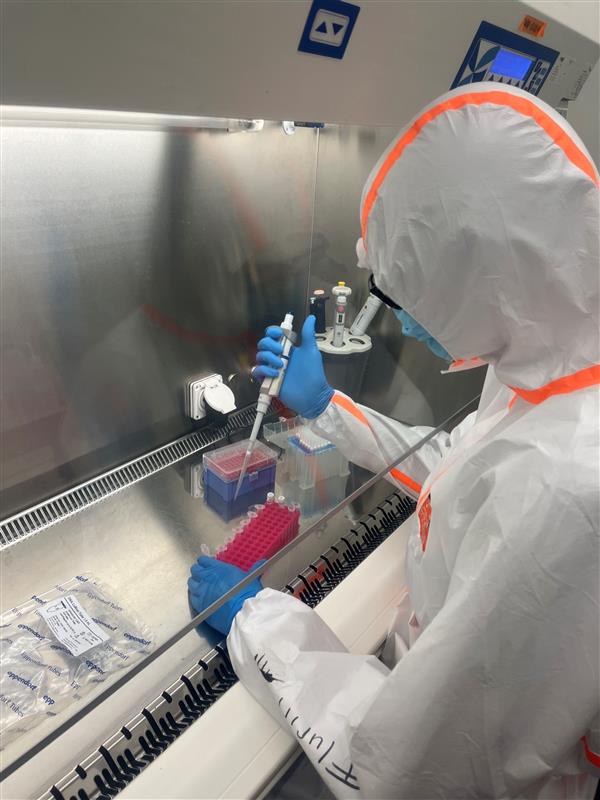eDNA clean lab
All organisms leave DNA traces in the environment that can be captured. By analyzing environmental DNA (eDNA) samples we can monitor biodiversity and detect species, which are difficult to monitor with traditional methods. Let’s imagine there are only a few individuals of one fish species living in a lake. We would have to spend countless hours trying to capture and identify them using traditional capturing methods. Our monitoring would also disturb many other organisms living in this lake. In this scenario it would be much faster to filter several liters of lake water to capture the eDNA of this fish species. Furthermore, we would not harm other organisms with our activity. Several studies have shown that monitoring biodiversity using eDNA is more efficient than using traditional monitoring.

eDNA samples can be taken from water, air or soil. The DNA is bound to organic material and contained in cells, which are shed by the organisms in the environment. Thus, we first need to extract the DNA from our samples after collecting them. eDNA naturally occurs at very low densities. If we again imagine the fish in a lake, the cells and DNA will be highly diluted. Therefore, we must amplify the extracted DNA (create several thousand DNA copies) to overcome this issue of low concentration. Additionally, we need to be especially careful in our workflow to avoid any kind of contaminations. Contamination could result in false positive errors: we would assume that the species is present but in reality, it is not. Such errors could have large impacts for conservation measures. Hence, we wear full-body suits, work in a clean lab and decontaminate everything with UV-light and bleach to destroy contaminating DNA. The amplified eDNA extraction is then ready for downstream analyses to identify organisms in our sample.
If we are interested in the entire community (e.g., all fish species living in a lake), we use metabarcoding to sequence all amplified DNA in our extraction. How many different species can we detect? And how do the communities differ inside and outside protected areas? The laboratory work and bioinformatic analyses are time consuming but reward us with many insights on the species community in our study system.
If we are only interested in a particular species, for instance because it is rare or endangered, we can use either quantitative PCR assays or newly developed CRISPR-Cas assays. In these reactions, not all amplified products are sequenced, but rather the DNA of our target species is bound through specific probes. The probe produces a signal when it finds (and binds) to the target DNA. Thus, we can detect whether our target species is present or not but do not know which other species also occur in our study system. The newly developed CRISPR-Cas assays are highly specific and flexible in their design. This allows us to quickly design new assays for different research questions, e.g. to survey rare species but also invasive species. You can read more about the CRISPR-Cas projects of our group here.

